15 Employee Engagement Ideas to Get Your Team Invested
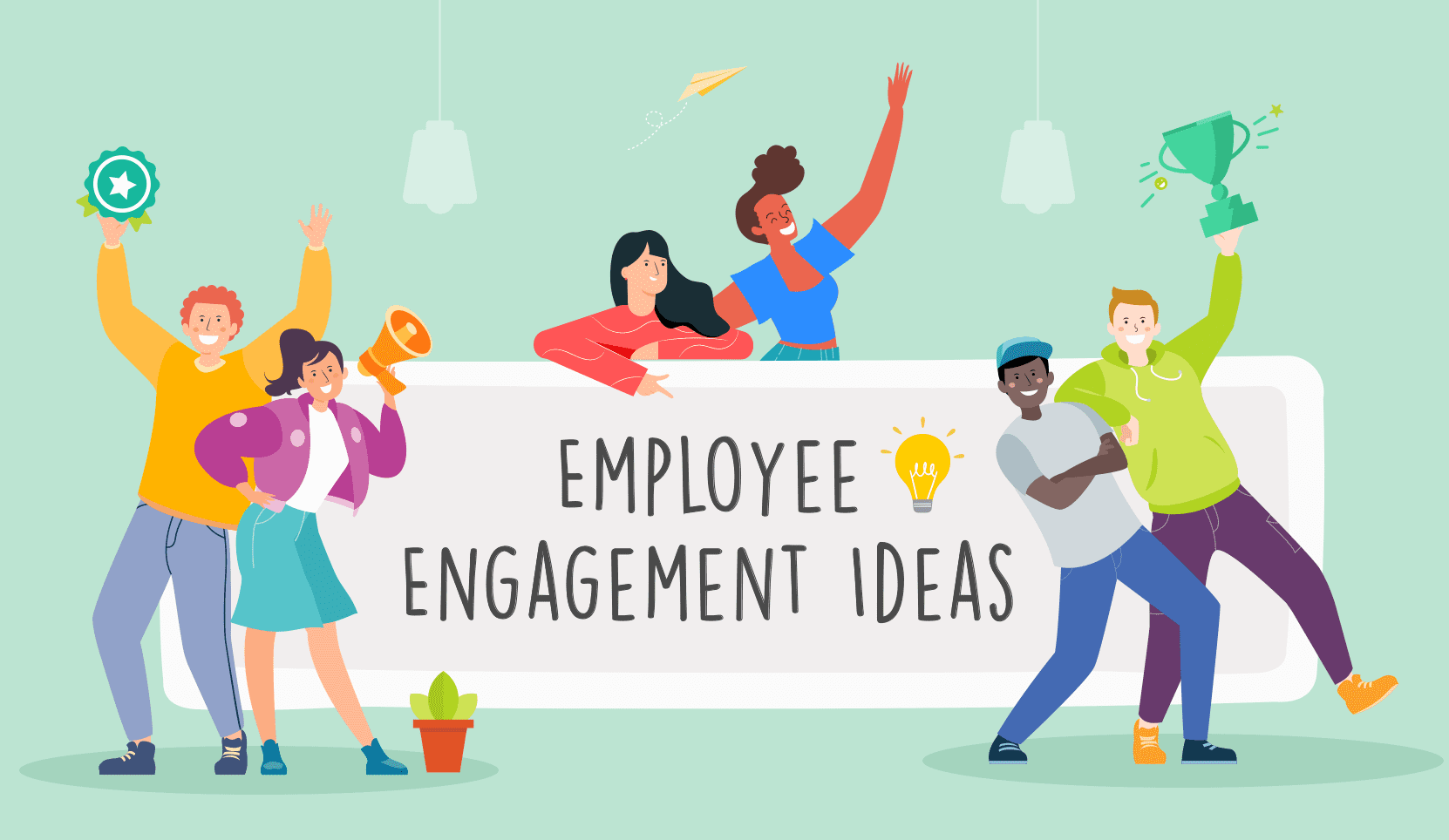
- What Is Employee Engagement?
- The Best Employee Engagement Ideas
- 1. Compensate Competitively
- 2. Establish a Rewards System
- 3. Offer Training and Career Advancement
- 4. Encourage Autonomy, Not Micromanagement
- 5. Offer Remote Work Options
- 6. Encourage Personal Projects
- 7. Facilitate Communication and Encouragement
- 8. Make Onboarding a Breeze for All
- 9. Welcome Employee Feedback
- 10. Hold Contests and Have Themed Office Days
- 11. Take Employees Out to Lunch
- 12. Volunteer as a Company
- 13. Have Snacks in the Office
- 14. Review Regularly to Gauge Happiness
- 15. Meet In and Outside of the Office
- Why Is Employee Engagement Important?
- Employee Engagement Tools
When done right, employee engagement results in each member of a company giving their best. They’re better at collaborating with the rest of their team—both on a personal level and when completing their job-related tasks—and are committed to company-wide success.
If engagement at your company is lacking, there are a lot of ways an uninspired workforce can be felt across a company and create a dramatic ripple effect. The key to turning this around is a commitment to improving your company culture from the inside out.
So let’s get familiar with what employee engagement is and why you shouldn’t overlook it. Plus, we’ll offer our employee engagement ideas, which have been tested at organizations of all sizes and in a variety of industries.

 Try Out Our
Try Out OurEmployee Engagement Software For Free
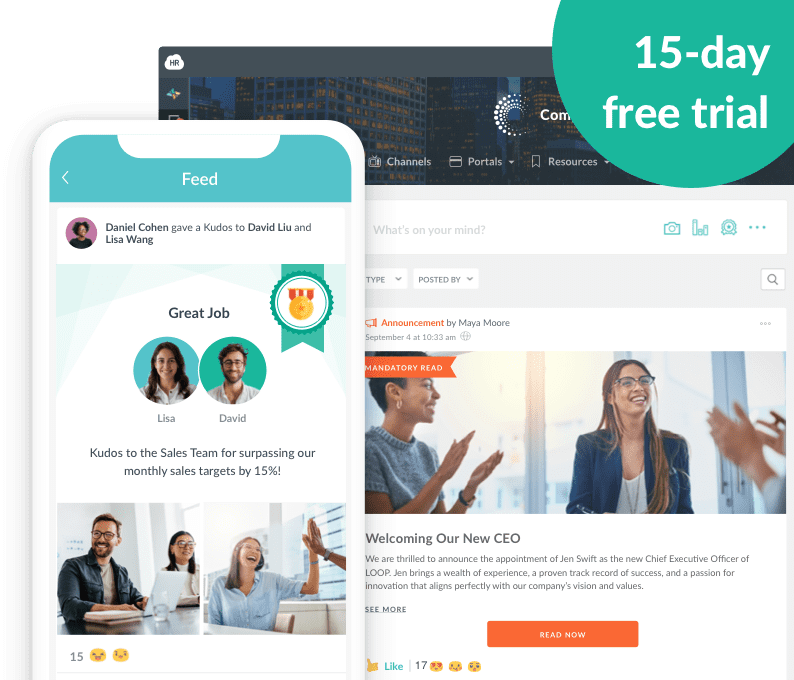
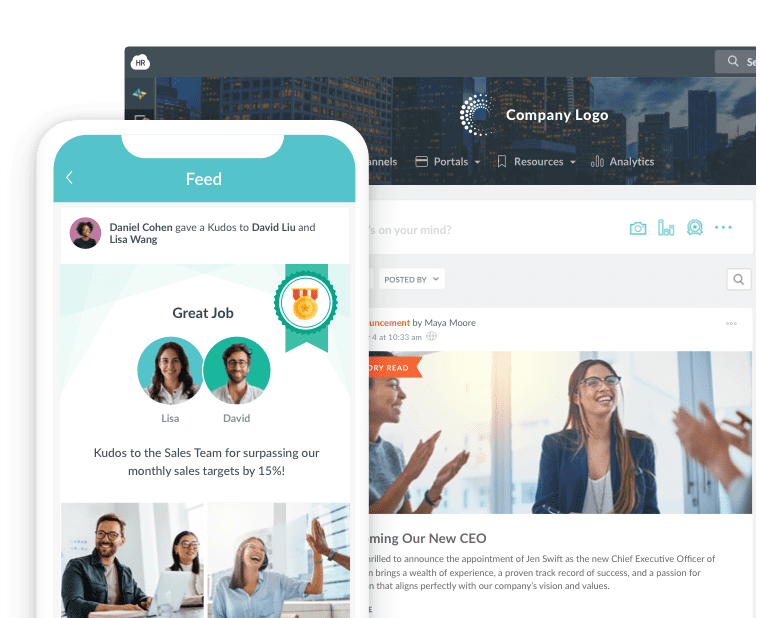
What Is Employee Engagement?
Employee engagement refers to the level of enthusiasm and commitment an employee feels towards their job and the organization. It encompasses how invested employees are in their roles and their willingness to go above and beyond to contribute to the company's success.
Engagement is, at its core, about company culture. The workplace should be a place where employees are generally happy, as they spend a lot of their time there.
The Best Employee Engagement Ideas
1. Compensate Competitively
People like to feel acknowledged for their hard work. And although salary is important, it’s not all they want. Be sure you’re staying on top in areas such as healthcare offerings, retirement plans, and generous PTO.
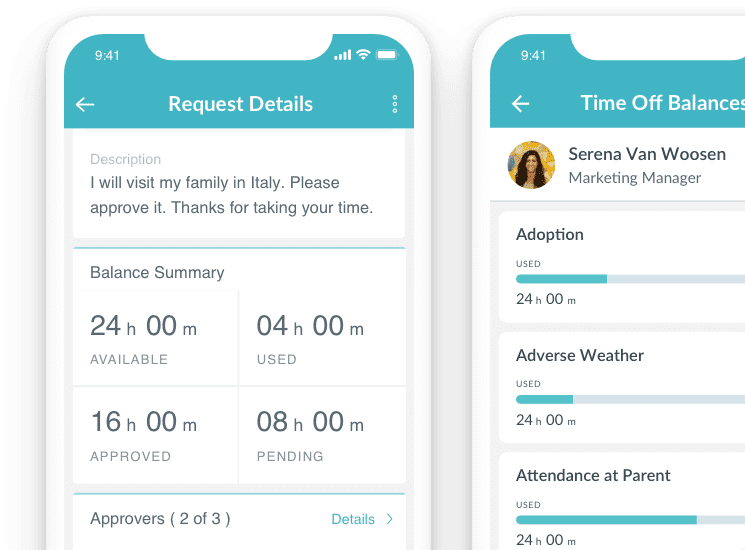
2. Establish a Rewards System
Whether it’s marketing, productivity, or engagement, there are a few things that wouldn’t benefit from the implementation of a gamified system.
Start by setting clear, measurable goals that align with company objectives, and then create engaging challenges or milestones around these goals. This system could involve earning points for hitting targets, completing tasks, or demonstrating company values, which can then be exchanged for various rewards such as extra vacation days, gift cards, or public recognition.
For example, employees might earn "innovation points" for contributing unique ideas, which are displayed on a digital leaderboard and lead to quarterly prizes for top performers, fostering a fun and competitive atmosphere that motivates everyone to engage more deeply with their work.
You can make this process even easier by implementing employee recognition software.

3. Offer Training and Career Advancement
Employees don’t want to stay in one position forever; they want to grow. That doesn’t mean that you need to prepare them to leave the company for greener pastures—instead, aim to make your company the greenest pasture out there.
Make sure every employee knows that promotions are not only possible but expected, given good work. Thus, you will find that training will be much appreciated. You can send them to conferences and workshops, assign them recommended readings, or provide them with company-branded how-to demo videos if they are working remotely.

4. Encourage Autonomy, Not Micromanagement
No one likes to feel that they are being micromanaged. Yes, employees should be held accountable, but they want to know that you hired them because you trust in their abilities to do their job. Give them direction, set deadlines, and then set them free to get the job done effectively.
You can of course, as a leader, guide them along the way if you notice that something they’re doing could be done more efficiently, but make sure you are not checking up on them at all hours of the day. Use your check-ins sparingly and they’ll be more likely to see them as help than feel a hint of dread.

5. Offer Remote Work Options
It may seem counterintuitive to let employees work from outside the office to boost their engagement, but negative office environments can cause work anxiety and thus hinder employee engagement.
In addition to relieving the stress of your employees, offering remote working arrangements will also help you stay competitive. This could look like allowing employees to work from home certain days of the week, setting up satellite offices, or even offering fully remote positions where team members can work from anywhere with internet access.

6. Encourage Personal Projects
One of the top things employees look for in a workplace is one that fosters a healthy work-life balance. Encourage them to have a life outside of work.
Do they want to hone a skill that is not directly related to their day job? Great, feel free to help them out if you know of resources you can suggest. Cheer them on. Show up for them however you can.
Managers and their subordinates should be able to talk about personal endeavors. If coworkers can share more and help each other out when it comes to their hobbies, they will be happier all around and learn to build each other up.

7. Facilitate Communication and Encouragement
Teams that like and appreciate each other work together best. Push for your employees to get to know each other and treat one another as respected individuals.
Plus, with the help of good engagement software, they can have a platform to give shout-outs and praise to their fellow staff. It shows each member of the workforce that the other members of the team truly believe in them and are taking note of their accomplishments.

8. Make Onboarding a Breeze for All
No one likes coming into a new job and filling out a ton of paperwork. Nor do you need it to be the first thing a new employee thinks about upon walking through the door on their first day—you want them to be excited about the orientation process and focused on the job they were hired to do.
The right software will enable smooth transitions for new hires rather than present a bit of a turnoff, as it may have been in the past. Getting the correct forms filled out and catching them up to speed does not have to be a dreaded task when everything is available virtually in one easily accessible place.
Today, it is more than possible to find an onboarding system that is a great experience for already busy HR staff and anxious new employees alike. With the latest technology, you can be sure they’ll feel welcomed rather than overwhelmed.
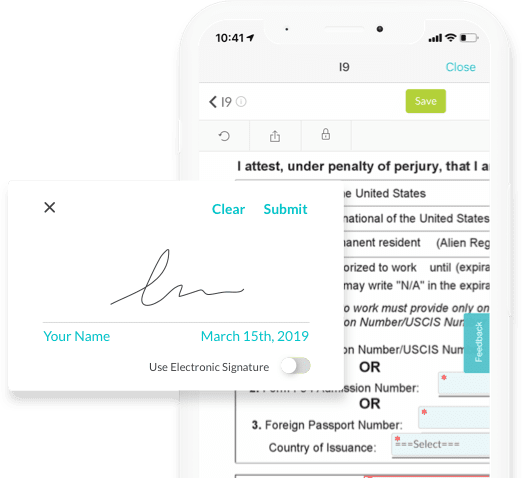
9. Welcome Employee Feedback
You want your organization to have integrity and transparency. This is not to say that you should toss out your corporate hierarchy framework. While most decisions should continue to come from the top, your employees need to feel that their voice is valued.
Invite feedback from all team members—yes, even from interns. Everyone should understand they deserve to have their opinions heard. They are more likely to be engaged and enthusiastically interact with their team if they feel they have a voice—and that you’re listening.
You do not have to accept every suggestion, but if an employee brings a concern to your attention or an idea of how to improve any area of your business, hear them out. Thank them for their contribution and see to it that it is at least considered.

10. Hold Contests and Have Themed Office Days
Who said work can’t be fun? Keep things interesting by, when appropriate, holding little games or themed days at the office.
Try a game night (or lunch). Whether it’s trivia, Pictionary, or even sports, having employees engage in friendly contests is always a good way to get the creative juices flowing and build relationships within the company.
Relay race obstacle courses, escape rooms, board games, card games, VR, you name it. As long as it’s something fun, cooperative, and takes away the stress of work then it’s a suitable candidate for game night.
Themed days can be aligned with major holidays such as a cook-off for Thanksgiving, costumes for Halloween, or a Secret Santa gift exchange for Christmas. And don’t forget about birthdays, as they’re easy to celebrate but just as easy to miss if you’re not keeping track.

11. Take Employees Out to Lunch
Going out to lunch with all the employees in your office provides a great opportunity to get to know everyone better. Plus, it gives them the opportunity to open up to you about any problems they may be facing.
Most veteran HR managers would agree that they’ve had better luck catching problems early when they already have a rapport with the employees at their company. It also helps you gather invaluable feedback about how the employees would want the company to run, what changes would make their jobs easier, and even any operational inefficiencies.
In addition to these small outings, you could also organize company-wide lunches every quarter so that everyone has the chance to build a stronger relationship both with their coworkers and the company as a whole. This reminds them that they’re part of something big and worthwhile.
Let Us Help You with Engaging Your Employees!
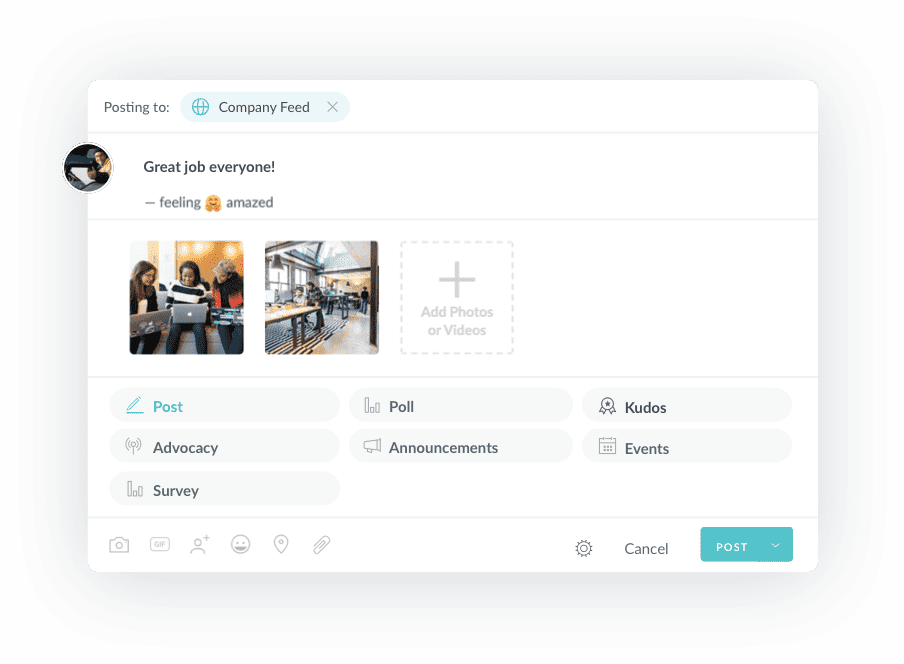
12. Volunteer as a Company
Many enterprises make giving back to the community a priority. Don’t just give money, though, as things can easily be made more personal than that. One poll found that a staggering 68% of employees would take a job with a company that values volunteer work over one that does not make time for it.
We’re also seeing that corporate social responsibility (CSR) ranks highest among millennials. Cone Communications reports that up to two-thirds of young professionals said they wouldn’t even consider working for a company that does not prioritize this. Not to mention, it’s great for team building.
Encourage your staff to volunteer together instead of simply giving them time off to do their own individual community service. And don’t be afraid to change it up—if you don’t have a set organization to which you prefer to donate, you can even have employees vote on which charity or nonprofit they’d like to help each year.

13. Have Snacks in the Office
Employees are more likely to engage with their work if they have access to extra benefits, particularly yummy snacks. You don’t have to spend a fortune on professional catering or bog your employees down with junk food.
There are quite a few nutritious snacks that you can offer such as avocados, dark chocolate, or red grapes. These will keep your employees both happy and healthy. It even serves as an extra incentive to join when headhunting talent. And there are plenty of food ordering solutions available worldwide to make things even easier.
14. Review Regularly to Gauge Happiness
Employees who regularly get to use their strengths, skills, and abilities were found to be as much as six times more likely to be engaged at work—and 8% more productive, according to research from Gallup.
Hold regular reviews with the aim of not only gauging their performance but also checking in on their overall well-being. If they’re not showing the growth their managers were expecting, there could be an underlying reason for that.
Make sure these assessments are a two-way street—don’t just talk at them, rather, give them a chance to explain their side. Ask them what their goals are, what you or their supervisors could be doing better as leaders, and what would improve their outlook on the job.
Get them to understand that you take change seriously and that if something can be identified that will help them do better, you will do your best to make that a reality for them. In the end, this should end up proving to be a solution, both for them and for the company as a whole.

15. Meet In and Outside of the Office
With all the tools we have in this digital era, it doesn’t matter if your team is distributed across the globe or sitting across a section of cubicles from one another, there is a way for them not only to get along but genuinely like each other.
Make sure to hold meetings regularly so that everyone is on the same page. Employees should see this as an opportunity to collaborate and ask for help. When people come together to share ideas, fewer potentially great ideas will escape the organization. Some of the greatest innovations started from joint efforts.
If people are remote, have them call or video into a conference. Even if the team is all situated at a physical office location, don’t skip this step. Emails cannot always replace the nuances and camaraderie of face-to-face interaction.
And it’s not just about work meetings. Organize ways for your people to meet up outside of work as well. Hold private company holiday parties at rented venues, invite staff to join together at a bar if everyone is local—or, if you have the funds and some of the team is remote, try gathering everyone together for annual, or biannual, retreats.
You want your team to feel like a cohesive group. And those who have fun together often stay together, creating memories that can then be taken back to work with them and shared among work friends.

Why Is Employee Engagement Important?
Hiring Top Talent
When a candidate is first researching to see whether they might want to apply, they’ll often look at websites that show current and former employees’ ratings of employers. When the majority of employees are pleased with their experience at the office, positive reviews show prospective hires what a great place your company is.
Boosting Productivity
Employees tend to be more productive when their overall experience is positive. And more productive team members are, of course, great for your bottom line.
The stock prices of businesses that have made it to Fortune’s “100 Best Companies to Work for" have risen 14%, per a study from the Jackson Organization as reported by Forbes, while those not on the list are reporting a mere 6% increase.
When it comes to salespeople, for instance, happier professionals are reported to be able to raise sales by an astounding 37%, on average, according to the Harvard Business Review.
Improving Client and Customer Relations
Happier employees generally provide a better experience to clients and customers. They genuinely believe in what they are selling and want to go the extra mile for customers’ success.
Lowering Turnover
Don't lose your best employees because they aren’t happy enough while at work. Keeping employee engagement high boosts talent retention.
Voluntary employee turnover has many costs. Plus, filling an empty role has a negative effect on employee morale and takes time and money. When employees see others exiting the company, they might think something is wrong and consider other opportunities.
Employee Engagement Tools
If any of these employee engagement ideas got the gears turning and sparked excitement for you while picturing all the new, interesting things you can have your team do together, get in touch!
We can walk you through HR Cloud’s engagement software, such as the ever-popular Workmates, to show you how tools that are easy, fun, cost-cutting, and time-saving can get you where you want to be.
A tight-knit, more communicative, and all-around more productive work environment is possible with our expert advice and acclaimed technology. To see happiness levels at your company rise quicker than you ever thought possible, reach out and we’ll help you reap the benefits of a more engaged workforce.
Author Bio:
This article is written by a marketing team member at HR Cloud. HR Cloud is a leading provider of proven HR solutions, including recruiting, onboarding, employee communications & engagement, and rewards & recognition. Our user-friendly software increases employee productivity, delivers time and cost savings, and minimizes compliance risk.
Keep Reading
Balancing Technology and the Human Touch in Employee Engagement
Companies are taking employee engagement very seriously because it is one of the ways of
Building Strong Teams: The Power of Team Bonding Exercises
Never overestimate the power of collaboration as a core element of effective team

